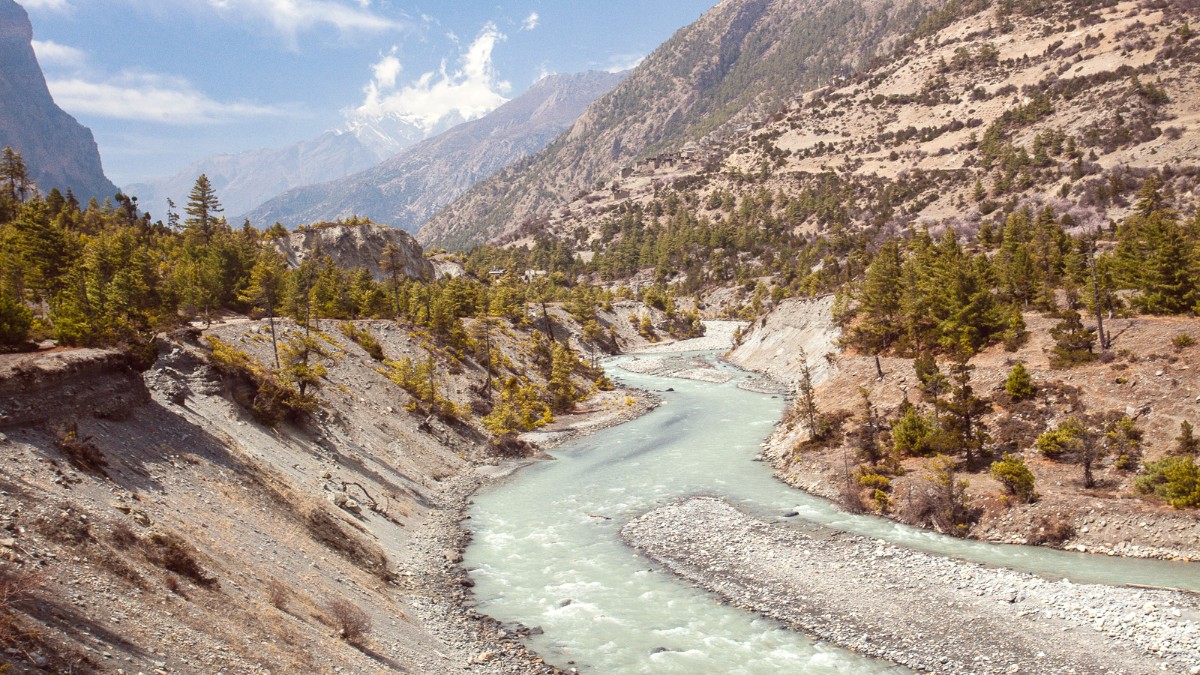
Nepal
Nepali cuisine developed through centuries of trade and migration. The staple diet includes grains, lentils, and seasonal vegetables, reflecting an agrarian society.
Spices like ginger, garlic, turmeric, cumin, and cardamom give savory flavors. Dairy products, especially from buffalo and yak, hold significance.
Common for Nepalis, especially with Dal Bhat. Use only your right hand, as the left hand is traditionally unclean.
Food often gets served from communal dishes. Use a serving spoon. Avoid wasting food; it is disrespectful.
Tipping for tea house staff is not expected for every meal. Breakfast, lunch, and dinner align with trekking schedules. "Dal Bhat Power 24 Hour" highlights its energy-sustaining quality.
Nepal's national dish: steamed white rice, lentil soup (dal), vegetable curry (tarkari), and often pickle (achar).
Unlimited refills of dal and tarkari at most tea houses, offering excellent value.
Nepali dumplings (momos), steamed or fried with various fillings. Thukpa is a hearty Tibetan noodle soup, warming at high altitudes.
Both are widely available in cities and most tea houses.
Yak cheese, sometimes yak steak, found at higher elevations. Other common dishes: Tibetan bread, Chowmein/Fried Rice, Aloo Gobi/Aloo Paratha.
Try yak cheese pizza if available!
Samosa, Pani Puri, Chaat, and Sel Roti are found in Kathmandu and Pokhara. Not available on the trek.
Major festivals like Dashain and Tihar feature special meat or sweet dishes. Your trek during these times might bring unique culinary traditions.
Exclusively available in Kathmandu and Pokhara, offering international cuisine or upscale Nepali dining.
Abundant in Kathmandu (Thamel) and Pokhara (Lakeside), with a mix of Nepali, Indian, Continental, and Chinese food.
Local eateries and street food stalls in cities. Tea houses on the trek serve as the only dining options.
In cities, many local eateries and street food stalls provide budget-friendly meals. Exercise caution regarding hygiene with street food vendors.
Choose vendors with high customer turnover.
Tea houses serve as both accommodation and the only dining options along the trail. They offer a fixed menu, and all trekkers eat in the communal dining hall.
This creates an unique community experience.
Often a Nepali style, still enjoyable.
Simple preparations for quick energy.
A common, satisfying option.
Found in larger villages like Manang.
Wheat is common in chapati, momos, and noodles. Ask if dishes contain wheat flour.
Cross-contamination can occur in basic kitchens.
Clearly communicate allergies, preferably with a written note in Nepali.
In cities, use online reviews like HappyCow for vegan/vegetarian restaurants. Research specific restaurant offerings.
On the trek, communicate directly and patiently with tea house owners or kitchen staff. They explain ingredients.
Available in Kathmandu and Pokhara. Learn to make Dal Bhat or Momos.
Some villages like Marpha (apples) and Manang (yak cheese) offer insights into local agriculture.
Dashain and Tihar are Hindu festivals with distinct food traditions.
It is a great value, and the unlimited refills help you stock up on energy for the next day's trek.
This dish provides necessary carbohydrates and protein.
Consuming the local staple connects you with the culture.
Local families benefit directly from your choice.
A communal setting where trekkers meet and share stories.
Directly supports local families and communities in remote areas.
The entire tea house experience provides an authentic insight into trekking culture.
Always carry some energy bars or snacks for between-meal boosts, especially on long trekking days.